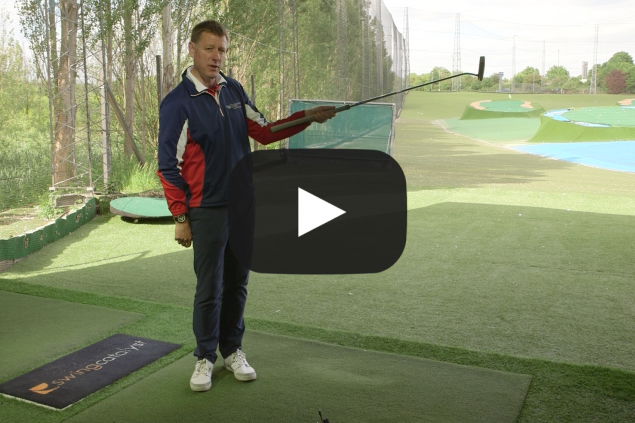Why you should use the claw putter grip
Golfmagic's Andy Roberts is starting to reap the rewards from using the claw putter grip

AFTER testing just about every new putter on the market in recent years, for that has been my job, you probably won’t be surprised to learn I’m continuing to tinker with my game.
Only this time around it doesn’t involve a golf club.
To give you a quick timeline of the flatsticks I’ve wielded during the last three years, I’ve gone from standard blade to belly to broom to almost-belly to high MOI to standard mallet to counterbalanced standard mallet.
I can happily report I'm still in a relationship with Miss Spider Si and we’ve now been dating for five months. Fingers crossed she’s not expecting a 6-month anniversary putting session on the green we first met.
The biggest change and the main point to this article however, has been a switch to the claw grip.
Despite hitting 13 of 18 greens during a recent game with my father at Hersham Golf Club in Surrey, 38 putts was truly abysmal. A week later, 35 putts. A week later, 37 putts. Something was going horribly wrong and it needed fixing.
The main problem I've had in the past has been that my right hand has tended to move one way and the left hand the other way, producing short and quick strokes - hence why I've tried various putter lengths in recent years.
With this new claw grip, however, my left hand assumes the normal, neutral position but the right hand applies only light grip pressure. Acting alongside the weight of the mallet head, it feels almost impossible to push or pull a putt inside the six-foot circle at least.
The claw grip, which I first ever saw used by Chris DiMarco and more recently by the likes of Sergio Garcia and five-time major champion Phil Mickelson, might not be for everyone but it’s certainly helping me. I can really see an improvement in Sergio's stroke since switching to the claw in 2011. The Spaniard ranked tied 159th back in 2010 when using the standard putter grip. He now sits in the top-30 and has done for the past three years.
I too have never been so confident putting. Even during a recent mini golf session down on Portsmouth pier, the claw grip was out in force as the rest of the family looked on just assuming I was trying to give everyone a chance.
The benefit of this stroke, for my own game at least, is not only fewer putts per round on top of improving my strokes-gained-putting stat but the putter head is going through vertically and putts are threatening the hole on a much more regular basis.
Out in Germany three weeks ago, I shot a round of 75 and enjoyed 29 putts. That’s unheard of when it comes to my putting stats. Better putting aids lower scores, this game really is as a simple as that.
Resting right hand on the bottom part of the putter grip, with left hand assuming the regular grip position, I suddenly feel more vertical and locked in at address. Yes it looks a bit weird but who cares. There are no pictures on a scorecard. I feel as though I can just rock the shoulders nicely and get myself in an ideal, neutral alignment.
I feel as though I can effectively take any wrist movement out the stroke, making it all-but impossible to hit a bad stroke from close range, something which has been all too common in my putting stroke this season. The right hand is barely on the grip so you don’t have quite as much hit to the putt and the left hand just controls everything through the ball.
I find the claw grip works great on fast greens, such as when playing out at St Leon Rot in Germany recently. From long range, okay, it does get a little tricky to gauge pace. That's something I’m currently contemplating and thinking whether it's worth going back to the standard putter grip for those putts outside of 30-feet.
The claw grip is well worth dabbling with if you find yourself struggling to hole out from close range. You really will start clawing those shots back.
��


